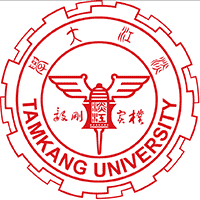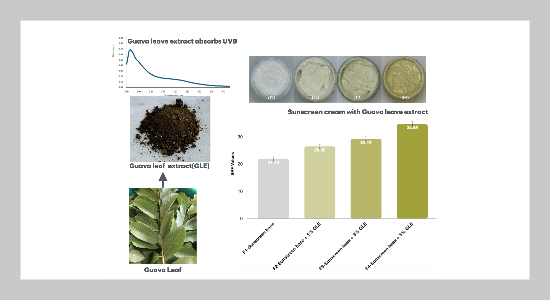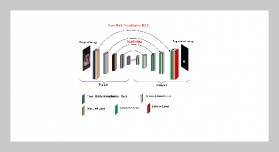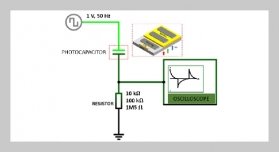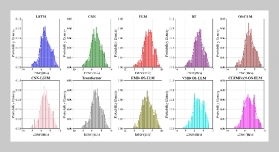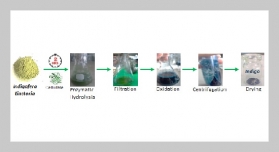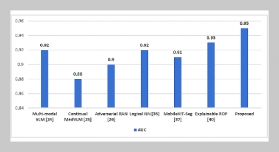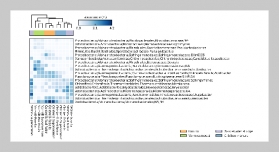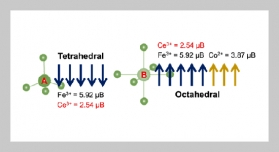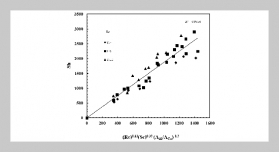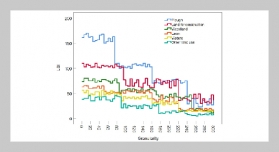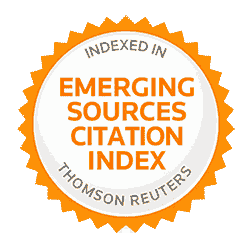- [1] H. W. Lim, I. Kohli, E. Ruvolo, L. Kolbe, and I. H. Hamzavi,(2022) “Impact of Visible Light on Skin Health: The Role of Antioxidants and Free Radical Quenchers in Skin Protection" Journal of the American Academy of Dermatology 86(3S): S27–S37. DOI: 10.1016/j.jaad.2021.10.041.
- [2] F. Solano, (2020) “Photoprotection and Skin Pigmentation: Melanin-Related Molecules and Some Other New Agents Obtained from Natural Sources" Molecules 25(7): 1537. DOI: 10.3390/molecules25071537.
- [3] J. D’Orazio, S. Jarrett, A. Amaro-Ortiz, and T. Scott, (2013) “UV Radiation and the Skin" International Journal of Molecular Sciences 14(6): 12222–12248. DOI: 10.3390/ijms140612222.
- [4] L. P. Milani, N. O. Garcia, M. C. Morais, A. L. Dias, N. L. Oliveira, and E. C. Conceição, (2018) “Extract from Byproduct Psidium Guajava Standardized in Ellagic Acid: Additivation of the in Vitro Photoprotective Efficacy of a Cosmetic Formulation" Revista Brasileira de Farmacognosia 28(6): 692–696. DOI: 10.1016/j.bjp.2018.08.005.
- [5] E. Manová, N. von Goetz, and K. Hungerbühler, (2014) “Ultraviolet Filter Contact and Photocontact Allergy: Consumer Exposure and Risk Assessment for Oc tocrylene from Personal Care Products and Sunscreens" The British Journal of Dermatology 171(6): 1368 1374. DOI: 10.1111/bjd.13175.
- [6] S. F. Ekstein and S. Hylwa, (2023) “Sunscreens: A Review of UV Filters and Their Allergic Potential" Dermatitis 34(3): 176–190. DOI: 10.1097/DER.0000000000000963.
- [7] E.Berardesca, T. Zuberbier, M. Sanchez Viera, and M. Marinovich, (2019) “Review of the Safety of Octocrylene Used as an Ultraviolet Filter in Cosmetics" Journal of the European Academy of Dermatology and Venere ology 33: 25–33. DOI: 10.1111/jdv.15945.
- [8] T. Kostka, J. J. Ostberg-Potthoff, K. Briviba, S. Mat sugo, P. Winterhalter, and T. Esatbeyoglu, (2020) “Pomegranate (Punica granatumL.)ExtractandIts Anthocyanin and Copigment Fractions—Free Radical Scavenging Activity and Influence on Cellular Oxidative Stress" Foods 9(11): 1617. DOI: 10.3390/foods9111617.
- [9] P. K. Goswami, M. Samant, and R. Srivastava, (2013) “Natural Sunscreen Agents: A Review" Scholars Aca demic Journal of Pharmacy 2(6): 458–463.
- [10] I. Sopyan, D. Gozali, and S. Tiassetiana, (2018) “Formulation of Tomato Extracts (Solanumlycopersicum L.) As a Sunscreen Lotion" National Journal of Physiology, Pharmacy andPharmacology8(3): 453–458. DOI: 10.5455/njppp.2018.8.1155018112017.
- [11] M. Kumar, M. Tomar, R. Amarowicz, V. Saurabh, M. S. Nair, C. Maheshwari, M. Sasi, U. Prajapati, M. Hasan, S. Singh, S. Changan, R. K. Prajapat, M. K. Berwal, and V. Satankar, (2021) “Guava (Psidium gua java L.) Leaves: Nutritional Composition, Phytochemical Profile, and Health-Promoting Bioactivities" Foods 10(4): 752. DOI: 10.3390/foods10040752.
- [12] M. D. Mota, R. Y. S. Costa, A. A. Guedes, L. C. Silva, and F. A. Chinalia, (2019) “Guava-Fruit Extract Can Improve the UV-Protection Efficiency of Synthetic Filters in Sun Cream formulations" Journal of Photochemistry and Photobiology B: Biology 201: 111639. DOI: 10.1016/j.jphotobiol.2019.111639.
- [13] J. Seo, S. Lee, M. L. Elam, S. A. Johnson, J. Kang, and B. H. Arjmandi, (2014) “Study to Find the Best Extraction Solvent for Use with Guava Leaves (Psidium guajava L.) for High Antioxidant Efficacy" Food Science &Nutrition 2(2): 174–180. DOI: 10.1002/fsn3.95.
- [14] A. Shahid, M. Inam-Ur-Raheem, R. Aadil, and M. Israr, (2022) “Phytochemical Screening and In Vitro Radical Scavenging Activities of “Gola” Guava Fruit and Leaf Extracts" Journal of Food Processing and Preservation 46(12): e16989. DOI: 10.1111/jfpp.16989.
- [15] H.-Y.Chen and G.-C.Yen,(2007)“AntioxidantActivity and Free Radical-Scavenging Capacity of Extracts from Guava (Psidium guajava L.) Leaves" Food Chemistry 101: 686–694. DOI: 10.1016/j.foodchem.2006.02.047.
- [16] B. Sripanidkulchai, A. Tattawasart, W. Khunkitti, and U. Rangsadtong, (2006) “Development of Mouthwash Formula from GuavaLeafExtract" Isan Journal of Pharmaceutical Sciences 2(1): 35–42. DOI: 10.14456/ijps.2006.4.
- [17] B. Lok, D. Babu, Y. Tabana, S. S. Dahham, M. A. A. Adam, K. Barakat, and D. Sandai, (2023) “The Anticancer Potential of Psidium guajava (Guava) Extracts" Life 13(2): 346. DOI: 10.3390/life13020346.
- [18] A. R. Nunes, Í. G. P. Vieira, D. B. Queiroz, A. L. A. B. Leal, S. M. Morais, D. F. Muniz, J. T. Calixto-Junior, and H. D. M. Coutinho, (2018) “Use of Flavonoids and Cinnamates, the Main Photoprotectors with Natural Origin" Advances in Pharmacological Sciences 2018: 5341487. DOI: 10.1155/2018/5341487.
- [19] R. Rodrigues, M. B. P. P. Oliveira, and R. C. Alves, (2023) “Chlorogenic Acids and Caffeine from Coffee By Products: A Review on Skincare Applications" Cosmetics 10(1): 12. DOI: 10.3390/cosmetics10010012.
- [20] E. Díaz-de-Cerio, A. M. Gómez-Caravaca, V. Verardo, A. Fernández-Gutiérrez, and A. Segura-Carretero, (2016) “Determination of Guava (Psidium guajava L.) Leaf Phenolic Compounds Using HPLC-DAD-QTOF MS"Journal of Functional Foods 22: 376–388. DOI: 10.1016/j.jff.2016.01.014.
- [21] N. Panyachariwat, A. Jimtaisong, and N. Saewan, (2024) “Antioxidative Potentials of Eleutherine bul bosa bulb and Its Utilization in Topical Cosmetic Emulsion" Cosmetics 11(4): 111. DOI: 10.3390/cosmetics11040111.
- [22] C.-C. Tsai, H.-S. Chen, S.-L. Chen, Y.-P. Ho, K.-Y. Ho, Y.-M. Wu, and C.-C. Hung, (2005) “Lipid Peroxida tion: A Possible Role in The Induction and Progression of Chronic Periodontitis" Journal of Periodontal Re search 40(5): 378–384. DOI: 10.1111/j.1600-0765.2005.00818.x.
- [23] B.-K. Jung, J.-B. Kim, J.-C. Kang, G. M. König, and A. D. Wright, (2006) “Antioxidant Activity of 3,4,5 Trihydroxybenzaldehyde Isolated from Geum japonicum" Journal of Food and Drug Analysis 14(2): 190–193.
- [24] M.P. Sutar and S. R. Chaudhari, (2020) “Screening of In Vitro Sun Protection Factor of Some Medicinal Plant Extracts by Ultraviolet Spectroscopy Method" Journal of Applied Biology and Biotechnology 8(6): 48–53. DOI: 10.7324/JABB.2020.80608.
- [25] A. Jimtaisong and N. Saewan, (2022) “Efficiency Evaluation of Topical Emulsion of Croton thorelii Gagnep. Ex tract and Its Related Properties" Maejo International Journal of Science and Technology 16: 124–134.
- [26] The Cosmetic, Toiletry and Fragrance Association and The European Cosmetic and Perfumery Association. The Guidelines on Stability Testing of Cosmetics. https://cosmeticseurope.eu/files/5914/6407/8121/Guidelines_on_Stability_Testing_of_ Cosmetics_CE-CTFA_-_2004.pdf. 2004.
- [27] H.Park, B. Kim, Y. Kang, and W. Kim, (2024) “Study on Chemical Composition and Biological Activity of Psidium guajava Leaf Extracts" Current Issues in Molecular Biology 46(3): 2133–2143. DOI: 10.3390/cimb46030137.
- [28] W.Ruksiriwanich, C. Khantham, A. Muangsanguan, Y. Phimolsiripol, F. J. Barba, K. Sringarm, P. Rach tanapun, K. Jantanasakulwong, P. Jantrawut, C. Chit tasupho, R. Chutoprapat, K. Boonpisuttinant, and S. R. Sommano, (2022) “Guava (Psidium guajava L.) Leaf Extract as Bioactive Substances for Anti-Androgen and Antioxidant Activities" Plants 11(24): 3514. DOI: 10.3390/plants11243514.
- [29] L. Li, L. Chong, T. Huang, Y. Ma, Y. Li, and H. Ding, (2023) “Natural Products and Extracts from Plants as Natural UV Filters for Sunscreens: A Review" Animal Models and Experimental Medicine 6(3): 183–195. DOI: 10.1002/ame2.12314.
- [30] N. Yusuf, C. Irby, S. K. Katiyar, and C. A. Elmets, (2007) “Photoprotective Effects of Green Tea Polyphenols" Photodermatology, Photoimmunology & Photomedicine 23(1): 48–56. DOI: 10.1111/j.1600-0781.2007.00280.x.
- [31] J. Anand, B. Upadhyaya, P. Rawat, and N. Rai, (2015) “Biochemical Characterization and Pharmacognostic Evaluation of Purified Catechins in Green Tea (Camellia sinensis) Cultivars of India" 3 Biotech 5(3): 285–294. DOI: 10.1007/s13205-014-0226-2.
- [32] F. Labanca, I. Faraone, M. R. Nolè, R. Hornedo Ortega, D. Russo, M. C. García-Parrilla, L. Chium miento, M.G.Bonomo,andL.Milella,(2020)“NewIn sights into the Exploitation of Vitis vinifera L. cv. Aglian ico Leaf Extracts for Nutraceutical Purposes" Antioxi dants 9(8): 708. DOI: 10.3390/antiox9080708.
- [33] L. C. Cefali, J. A. Ataide, I. M. Sousa, M. C. Figueiredo, A. L. Ruiz, M. A. Foglio, and P. G. Maz zola, (2020) “In vitro Solar Protection Factor, Antioxi dant Activity, and Stability of a Topical Formulation Con taining Benitaka grape (Vitis vinifera L.) Peel Extract" Natural Product Research 34(18): 2677–2682. DOI: 10.1080/14786419.2019.1677385.
- [34] R. M. Gutiérrez, S. Mitchell, and R. V. Solis, (2008) “Psidium guajava: A Review of Its Traditional Uses, Phy tochemistry and Pharmacology" Journal of Ethnopharmacology 117(1): 1–27. DOI: 10.1016/j.jep.2007.10.020.
- [35] K. Bilal, F. Mehboob, N. Akhtar, I. A. Mirza, M. K. Okla, M. J. Dar, I. A. Saleh, N. Zomot, and H. Fatima, (2024) “Wound Healing, Antioxidant and Antibacterial Activities of Polyphenols of Psidium guajava L. Leaves" South African Journal of Botany 165: 538–551. DOI: 10.1016/j.sajb.2024.03.023.
- [36] C. Lorena, A. Ressaissi, and M. L. Serralheiro, (2022) “Bioactives from Psidium guajava Leaf Decoction: LC-HRMS-MS-Qt of Identification, Bioactivities, and Bioavailability Evaluation" Food Chemistry Advances 1: 100003. DOI: 10.1016/j.foodchem.2022.100003.
- [37] M. Pasupathi, B. Natarajan, and T. Kumar,(2024)“Enhanced Sun Protection Factor of Octocrylene with Green Tea and Bhringraj Extracts" Cutaneous and Ocular Toxicology 43(2): 134–147. DOI: 10.1080/15569527.2024.1834562.
- [38] T. Atomssa and A. V. Gholap, (2015) “Characterization and Determination of Catechins in Green Tea Leaves Using UV-Visible Spectrometer" Journal of Engineering and Technology Research 7(1): 22–31. DOI: 10.5897/JETR2014.0171.
- [39] M. D. Mota, A. N. daBoaMorte, L. C. R. C. E. Silva, and F. A. Chinalia, (2020) “Sunscreen protection factor enhancement through supplementation with Rambutan (Nepheliumlappaceum L) ethanolic extract" Journal of Photochemistry and Photobiology B: Biology 205: 111837. DOI: 10.1016/j.jphotobiol.2020.111837.
- [40] M.Bîrsan, A.-V. Focs , a, S , .-I. Scripcariu, P. Antonoaea, C. Pintea, R. A. Vlad, M. M. Scutariu, and A. Ciurba, (2024) “Texture analysis and comparative screening of the sensory properties of new skincare products" Farmacia 72(4): 875–884.
- [41] A. A. Jagtap, Y. S. Badhe, P. D. Farde, M. V. Hegde, and A. A. Zanwar, (2022) “Long-term storage stability assessment of omega-3-fatty acid emulsified formulation containing micronutrients" Journal of Pharmaceutical Innovation 17(4): 1126–1135. DOI: 10.1007/s12247-021-09541-6.
- [42] S. Smaoui, H. B. Hlima, I. B. Chobba, and A. Kadri, (2017) “Development and stability studies of sunscreen cream formulations containing three photo-protective filters" Arabian Journal of Chemistry 10: S1216–S1222. DOI: 10.1016/j.arabjc.2013.02.018.
- [43] A. Baldisserotto, P. Buso, M. Radice, V. Dissette, I. Lampronti, R. Gambari, S. Manfredini, and S. Vertu ani, (2018) “Moringa oleifera leaf extracts as multifunc tional ingredients for "natural and organic" sunscreens and photoprotective preparations" Molecules 23(3): 664. DOI: 10.3390/molecules23030664.
- [44] L. Yarovaya and W. Khunkitti, (2019) “Effect of grape seed extract as a sunscreen booster" Songklanakarin Journal of Science and Technology 41: 708–715.
- [45] L. Yarovaya, N. Waranuch, W. Wisuitiprot, and W. Khunkitti, (2022) “Chemical and mechanical accelerated and long-term stability evaluation of sunscreen formulation containing grape seed extract" Journal of Cosmetic Dermatology 21(11): 6400–6413. DOI: 10.1111/jocd.15178.
- [46] European Commission, (2006) “Commission Recommendation of 22 September 2006 on the efficacy of sun screen products and the claims made relating thereto" Official Journal of the European Union 265: 39–43.
- [47] N. A. Shaath, (2010) “Ultraviolet filters" Photochemical & Photobiological Sciences 9(4): 464–469. DOI: 10.1039/b9pp00174k.
- [48] N. Saewan and A. Jimtaisong, (2013) “Photoprotection of natural flavonoids" Journal of Applied Pharmaceu tical Science 3(3): 129–141.
- [49] A. Hubner, F. Sobreira, A. Vetore Neto, C. A. d. S. O. Pinto, M. F. Dario, I. E. C. Díaz, F. R. Lourenço, C. Rosado, A. R. Baby, and E. M. Bacchi, (2019) “The synergistic behavior of antioxidant phenolic compounds obtained from winemaking waste’s valorization increased the efficacy of a sunscreen system" Antioxidants 8(11): 530. DOI: 10.3390/antiox8110530.
- [50] M. Paciulli, G. Maria, R. Massimiliano, C. Antonella, F. Federica, D. M. Carla, G. Mattia, and C. Emma, (2022) “Microencapsulated olive leaf extract enhances physicochemical stability of biscuits" Future Foods 7: 100209. DOI: 10.1016/j.fufo.2022.100209.
- [51] I. Lacatusu, N. Badea, A. Murariu, and A. Meghea, (2011) “The encapsulation effect of UV molecular absorbers into biocompatible lipid nanoparticles" Nanoscale Research Letters 6(1): 73. DOI: 10.1186/1556-276X-6-73.
- [52] Y.-J. Lee and G.-W. Go, (2020) “Sunscreen boost ing effect by solid lipid nanoparticles-loaded fucoxan thin formulation" Cosmetics 7: 14. DOI: 10.3390/cosmetics7010014.
- [53] B. Khameneh, V. Halimi, M. R. Jaafari, and S. Gol mohammadzadeh, (2015) “Safranal-loaded solid lipid nanoparticles: evaluation of sunscreen and moisturizing potential for topical applications" Iranian Journal of Basic Medical Sciences 18(1): 58–63.
- [54] E. C. Felippim, P. D. Marcato, and P. M. B. G. Maia Campos, (2020) “Development of photoprotective formulations containing nanostructured lipid carriers: sun protection factor, physical-mechanical and sensorial properties" AAPS Pharm Sci Tech 21(8): 311. DOI: 10.1208/ s12249-020-01800-3.
